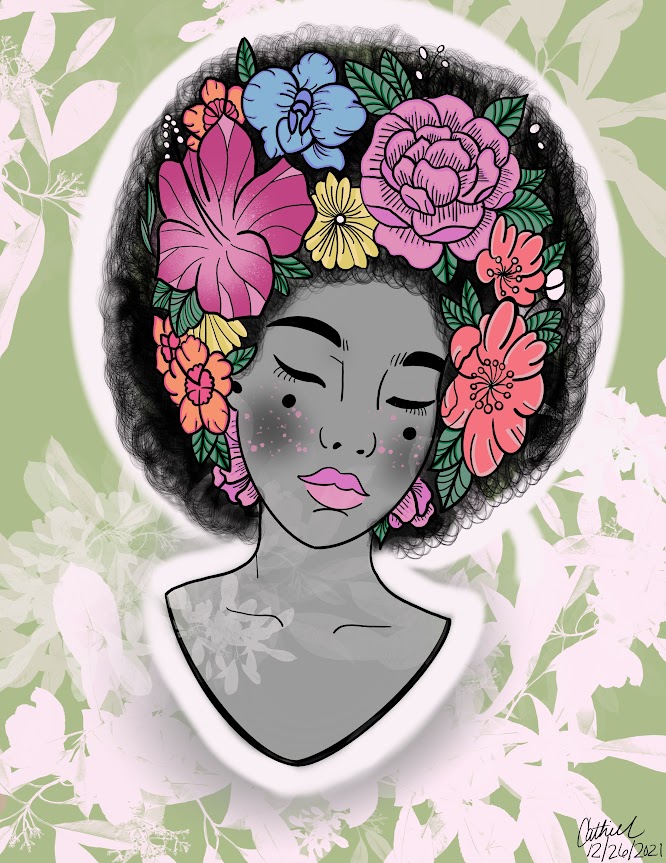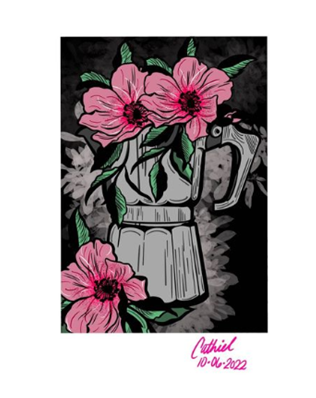This is What I Know About Art by Kimberly Drew
From what I learned about Kimberly Drew, she was like one of us; a student, working and going to full time who happened to find her passion in the midst of her college career and early 20s. What she didn't realize is that passion for her career was always there, but it took an internship during college to get her to realize that. Her story shines a light on themes such as finding the source of our motivation for activism in unexpected and unruly places, making the decision to participate, and putting the work in to raise awareness to societal issues. In order for there to be more art activists, there has to be a moment where the said artist is struck with the motivation to look into the problem, conduct research and experiment in ways they can project the issue to the world. Activist art is not just about a drawing or painting that can be shown to the public. Oftentimes concepts such as marketing and networking is what gets the ideas out there, and Kimberly Drew understood the importance in that.
What stuck out to me the most was Kimberly explaining her decision to complete change the trajectory of her career plans in college. On page 20, Drew writes "When I got back to Smith College, I dropped my architecture major and began to register for art history classes. Because I was a junior, I had to take three art history classes a semester to complete the major. Though determined, I was also working two jobs and knew almost nothing about art'" (Drew, 2020). All it took was one internship to influence and push Drew to change her life and pursue something she found important. She was on the cusp of finishing her degree, just to turn around and alter her life to pursue art history.
Kimberly knew that it wasn't just the artist themselves that can be activists. There was a specific moment where I could relate to Kimberly on a more personal level. On page 11, she explains "My first art-related memory . . . is from kindergarten . . . When assigned art projects, I would trade my lunch for artwork made by my classmates who I knew had better art skills. Why make my own drawings when I knew someone who could do it better" (Drew, 2020). Its the authors who write about these activists, the historians who tell the stories and the curators who push the art all play a role in activist art. There needs to be people who are just as passionate about the cause as the artist is. Can we always change the audiences' mind? Unfortunately, no. In the Art of Activism, the Lambert and Duncombe explain "So, to sum up: 1) our political belief systems are soft-wired into our brains, 2) presenting new facts won't change what someone thinks, and 3) the chance of people changing their minds decreases with age" (185). The older one is, the harder it is to "change their mind." Maybe the goal isn't to shift the perspective, but to get someone to actually think and question the topic at hand. Kimberly Drew used her platform and connections to softly push for artistic activism. Her platform grew gradually, and more people caught wind of the messages and art she was trying to get out.
Kimberly Drew also understood that in order to make real change and influence minds, she had to educate herself. Throughout her book she describes all the research and classes and internships she participated in order to gain the knowledge about the art and understand different walks of life. She made it her business to get to know people and especially, to get to know art. In the text, The Art of Activism, the authors describe how we should " . . . try and understand why people think what they think and do what they do, and to then use this to build a better world together. Instead of dismissing people's decisions as ignorant, or nonsensical, we can learn to make sense of the thinking can learn to think more like them" (page 241). If you want someone to understand you, you need to be able to be open to understand others. Taking the time to be talk and get to know the "where, how, why and what" of an opposite mindset even gives you the chance to gain ideas on how to appeal to a bigger, broader audience.
influenced me in a way that made me think about three things that I am very passionate about: mental health, beauty standards, and cultural appreciation. I've personally always used my own art to express myself about all three topics. What I need to do is become more active in networking and putting my artwork out there. The truth is I am the only one that gets in my own way because oftentimes I felt as if my art wasn't good enough to be presented on a poster or in a gallery. But what Kimberly Drew taught me through her book is that if I wanted to see change, then I needed to believe in my own art and have the courage to showcase it. Below, you will see four different art pieces that I have drawn on paper or done on Procreate that emulates the topics I am passionate about.
 |
| This was done on Procreate to emulate the beauty of textured hair in women. |
 |
| This was done on Procreate. I wanted to showcase the island flower (hibiscus) and the coffee pot; two well known things from Puerto Rico. |
Works Cited
Duncombe, Steve. Lambert, Steve. The Art of Activism. OR Books, 2021.
Drew, K. (2020). This is what I know about art. Penguin Workshop.


No comments:
Post a Comment